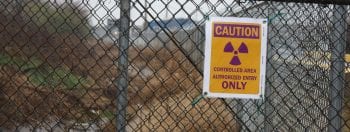After years of back-and-forth between community members, grassroots organizations and government agencies, the Environmental Protection Agency has come to a final decision on their path forward for the West Lake Landfill Superfund Site.
Located in Bridgeton, Missouri, only a 20-minute drive from campus, the West Lake Landfill is a problem that stretches back to the mid-20th century. The landfill is contaminated with radioactive materials originally created during the Manhattan Project, America’s initiative to invent the atomic bomb during World War Two. This waste sat in storage for nearly 30 years before it was mixed with topsoil and dumped into the West Lake Landfill in 1973, contaminating the site before it was placed on the National Priorities List in 1990 (westlakelandfill.com).
There have been clear health concerns associated with the landfill, with the community experiencing higher than expected rates of asthma and even childhood brain cancer. Additionally, a fire first discovered in 2010 has been steadily burning underground, and threatens to reach the radioactively contaminated materials.
Community organizations such as Just Moms STL have worked tirelessly to bring attention to this issue, seeking the governmental support necessary to address the problem. Over time, partnerships have been developed between the community organizations and both student groups and national organizations to demand that the EPA to take action. This fall, a decision was announced that represents the culmination of years of advocacy, outreach, and compromises driven by residents of the area and local organizations.
In a statement released on September 27th, the EPA agreed to excavate all radiologically impacted material greater than 52.9 picocuries per gram down to a depth of 12 feet. In certain highly impacted areas, they have also agree to excavate to a depth of 20 feet. The project will take approximately three years to complete and will cost an estimated $205 million. Compared to a previously recommended plan, this initiative will be finished a year sooner and cost $30 million less.
Acting Administrator Wheeler lauded the new plan by stating “The improvements we’ve made in our final remedy will speed up construction time by a year and reduce exposure to the community and cleanup workers while still removing virtually the same total amount of radioactivity”. Regional Administrator Jim Gulliford, who represents the St. Louis area, also expressed his excitement with the plan, calling it a “significant milestone for the Bridgeton community”. After the excavation is completed, an engineered cover will be installed over the landfill, designed to contain the radioactive waste that will inevitably remain.
This is long awaited news for the Bridgeton community, and one step forward in an area burdened by environmental injustices.The community anticipates monitoring progress and holding officials accountable for delivering the plan as promised.
This article was written by Jacob Plotkin, Environmental Justice Associate.
